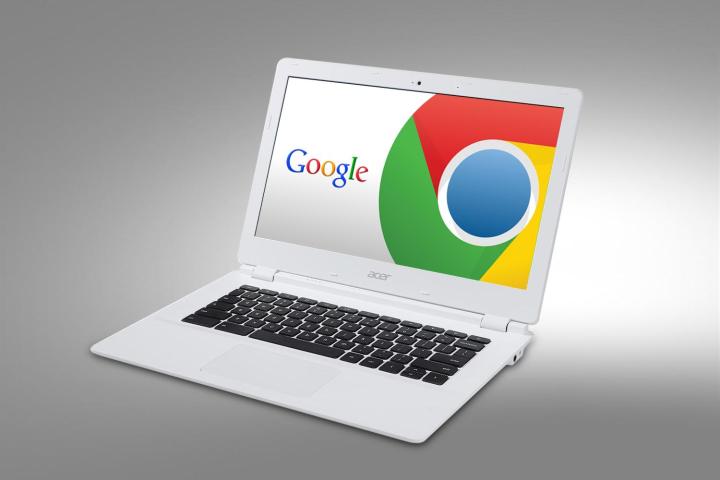
Wearing a 13.3-inch display, the Acer Chromebook 13’s screen comes in one of two flavors, one that’s 720p and another whose resolution weighs in at 1080p.
So aside from improved graphics processing over competing Chrome OS notebooks, one of the benefits that the Chromebook 13’s Nvidia Tegra K1 processor offers is significantly better battery life compared to the typical Chromebook, Acer claims.
For example, the Acer C7 Chromebook has a rated battery life of “up to” four hours. Meanwhile, Acer says the 720p Chromebook 13’s battery life is rated at 13 hours, while the 1080p version gets 11 hours of endurance. Expect those numbers to vary depending how hard you push these machines.
Related: Acer stuffs an Intel Core i3 CPU into a C720 Chromebook
Weighing 3.31 pounds and measuring 0.71-inches thin, the Acer Chromebook 13 should be plenty easy to carry around. Port selection is slim compared to most Windows laptops, as is usually the case with Chromebooks. This one will sport a pair of USB 3.0 ports and an HDMI connection. A 720p webcam is perched over the screen, and wireless connectivity comes courtesy of 802.11ac Wi-Fi compatibility.
The Acer Chromebook 13’s RAM and storage will vary depending on which version of the notebook you get. For instance, the $280 model (which is the cheapest of the bunch) nets you 2GB of RAM, a 16GB SSD, and a 720p display. Spending an extra $20 gets you the same basic components with a 1080p screen.
Related: Google Chromebook support fact sheet
The next step up is the $380 unit, which gets you 4GB of RAM, a 32GB SSD, and a 1080p screen. Finally, there’s a $330 model, which keeps the memory at 4GB but slices the SSD’s capacity in half and puts the screen’s resolution back at 720p. Acer says the $330 Chromebook 13 will be available only for commercial and education customers, however. Acer also says that the Chromebook 13 is fanless, which means that it should run almost silently.
You can pre-order the Acer Chromebook 13 right now on Amazon.com. Will the combination of Acer and Nvidia be another hit for the Chrome OS?
Editors' Recommendations
- Acer’s new gaming laptop bring Nvidia RTX 40-series GPUs under $1,000
- Cheap Chromebooks: Acer, Dell, HP laptops on sale for less than $300



